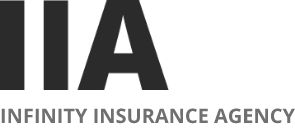If you live in California, Florida, Arizona, Texas, or Georgia, among other states, you may be familiar with natural disasters. Natural disasters like hurricanes, earthquakes, and wildfires can cause significant damage to homes, vehicles, and personal property. Insurance policies used for natural disasters are designed to help cover the costs of repairing or replacing your property after such events. These types of insurance policies can include specific coverage for different types of disasters, such as flood insurance or earthquake insurance.
What does insurance for natural disasters cover?
Insurance for natural disasters varies depending on the type of disaster and the policy you choose. Common types of coverage include:
- Flood insurance: Helps pay for damage caused by flooding from hurricanes and heavy rains including the home’s structure and personal belongings. A typical homeowner or rental policy will not cover flood damage. You must purchase this policy from the federal government under the National Flood Insurance Program.
- Earthquake insurance: Helps pay for damage caused by earthquakes, such as structural damage to your home and personal property. Typically, it’s not included in your homeowner or rental policy.
- Wildfire insurance coverage: Helps pay for damage from wildfires, including damage to your home and belongings. Your homeowner or rental policy may help pay for these damages.
Do you need insurance for natural disasters?
Whether you need insurance for natural disasters depends on where you live and the types of risks you face. For example, if you live in a flood zone, hurricane-prone area, or near fault lines, it’s crucial to have specific coverage. Many standard homeowner’s policies do not cover flood or earthquake damage making additional coverage necessary. Checking a flood risk map or consulting local hazard information can help determine your need for such insurance.
Despite technological advances in the last few decades, natural disasters like hurricanes, tropical storms, tornadoes, and earthquakes continue to leave thousands of people without homes each year. Natural disasters cannot be controlled, but what you do have control over is having the right insurance coverage.
How to prepare for natural disasters: A short list of tips
Preparing for natural disasters involves more than just having insurance. Here are some steps to take:
- Create an emergency plan: Have an evacuation plan for each disaster and make sure all family members are familiar with it. Know multiple exit points from your home and determine safe zones.
- Emergency supplies: Keep an emergency kit with essential medical supplies, medications, and important documents easily accessible to you.
- Home preparation: Know how to turn off gas, water, and electricity utilities in your home. Keep flashlights accessible.
- Vehicle preparation: Make sure your vehicle is ready for an emergency by keeping it fueled and in good condition. Park it in a safe location, preferably indoors or on high ground.
Storing a vehicle during a natural disaster
If you need to evacuate and leave your car, truck, RV behind, these tips may help minimize damage to it.
- Documentation: Take photographs of the interior and exterior of the vehicle to document its condition. Most digital cameras allow for time and date stamps that will help you prove the condition of your vehicle pre-storm.
- Parking: If possible, park in an enclosed space. Otherwise, find high ground and avoid parking near trees or utility poles that may fall over due to high wind conditions.
- Security: Set the emergency brake, and if possible, chock the wheels especially if your vehicle is on the heavier side. Make sure to lock all doors and windows. By applying masking tape to windows, you may help to prevent shattering.
- Preparation: If you have time during an emergency, check fluid levels, tire pressure, and ensure the vehicle has some fuel. Take the car keys, title, and registration with you.
It may be tempting to use the vehicle that you must leave behind as a place to store your valuables. However, even after taking precautions, your vehicle and the belongings inside may still sustain damage. It is suggested you take your important documents, like your personal ID and small valuables such as jewelry and cash. After the storm passes, if your vehicle is in safe driving condition, make sure to not drive through standing water. You don’t know how deep the water is or if it is hiding something like a fallen power line. Be extremely cautious.
State and federal resources for natural disasters
Various state and federal resources can help you prepare for and respond to natural disasters:
- NOAA Hurricane Tracker: Provides updates on hurricane activity.
- FEMA: Offers information on disaster preparedness and assistance programs.
- Red Cross: Provides disaster response and recovery assistance.
- State Emergency Services: Provides resources such as emergency response updates and local shelter information. Resources may vary by state.
Insurance for natural disasters is a critical part of helping to protect your home and belongings from unpredictable events. By understanding what it covers, assessing your needs for specific policies, and preparing effectively, you can mitigate the impact of natural disasters. Utilize state and federal resources to stay informed and be proactive in your preparations. For personalized insurance advice and coverage options, contact an insurance agent to ensure you have the protection you need.
